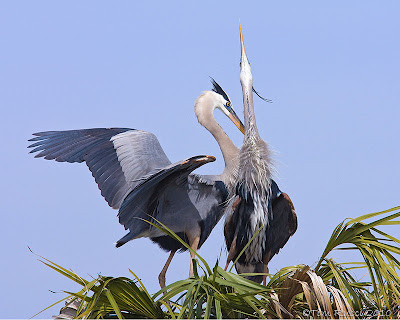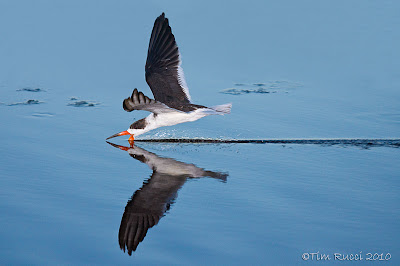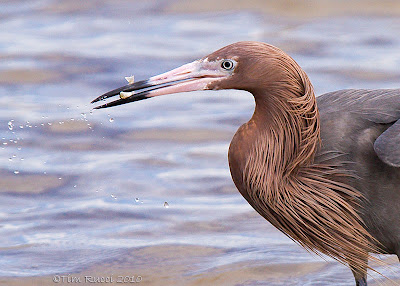(Continued from Part -1 )
After Merritt Island, we headed down to Viera Wetlands, which is about 40 minutes south, off I-95.
The goal there was caracaras. We had visited the place on a couple prior occasions but never seen them. We were joined there by another friend, Klaus Peter and his friend Donnie who had met us at Merritt Island. And just by chance we also bumped into fellow blogger Brad Myers who was on vacation from Pennsylvania (what a small world). It's difficult to get any keeper shots of wading birds at Viera because they do not allow people to shoot from the edge of the water, so it's difficult to get low enough to create a nice blurred background. Although most of the time nobody will catch you if you break the rules.
There are usually good possibilities for nesting birds and some occasional flyers. I made a fair amount of images of great blue herons, and the two shown above are my favorites. [click any image to enlarge]
We finally saw a caracara, but it landed very high in a pine tree, too far away for any photo worth showing here. But a few minutes later a juvenile bird flew past us and eventually perched on a fence post. I hate having a fence post in the photos but sometimes you just take what you can get. Having not yet gotten images of his species, we took a few shots and then worked in closer to try to get better ones.
After finishing with the caracara, we felt we had gotten what we came for, so we headed to our next planned stop. We had virtually no luck at Orlando Wetlands, Circle B Preserve, and Corkscrew. The water level at Corkscrew was so high that there were no birds. After spending an afternoon there, we elected to make a run down to the Everglades because the folks at Corkscrew told us it had lots of birds.
 This anhinga was working the canal and repeatedly came up with minnows. It was a challenge to try and get him in the photo before the fish was gone. I snapped this one just in time. The same anhinga is seen below with a bigger catch. It seems pretty amazing to me that a bird this size can swallow a fish as big as this one all in one gulp.
This anhinga was working the canal and repeatedly came up with minnows. It was a challenge to try and get him in the photo before the fish was gone. I snapped this one just in time. The same anhinga is seen below with a bigger catch. It seems pretty amazing to me that a bird this size can swallow a fish as big as this one all in one gulp.Another stop we made was the north beach at Fort De Soto Park. It felt really strange to arrive there to find the parking lot empty, even in the middle of spring break. Since the weather turned too cold for swimming and partying on the beach, the college kids had apparently resorted to indoor partying and we had the whole place to ourselves. There were literally 4 cars in the parking lot when we pulled up.
About the only thing I saw there was a pair of oystercatchers. They were pretty skiddish but eventually I managed toget close enough to get some photos. This is another species that I had been wanting to photograph, so I was glad to see them.
All and all, this was a good trip. It would have been even better if we had seen more birds, but the cool weather and the combination of high water at Corkscrew made the birds pretty scarce. Ironically I still manged to photograph 3 new species and get some improved images of several more. One bird I have still not properly photographed is a swallowtail kite. I saw a few of them on this trip, but struck out every time. Either they were too far off or obstructed in flight by tree branches above me. I will close this post with the sunset over the north beach at Fort De Soto Park.






















